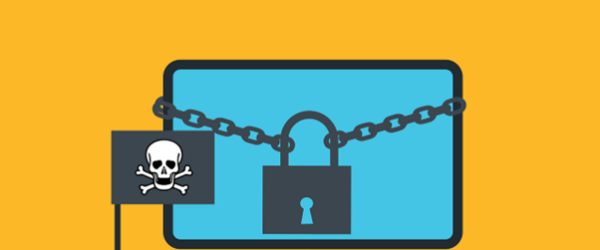IT disaster recovery is a critical strategy for local businesses, ensuring they can protect and restore their data and operations after disruptive events. This process includes various components designed to reduce risks associated with data loss, downtime, and operational failures.
The importance of disaster recovery for local businesses is its ability to:
- Protect important information
- Keep customer trust
- Ensure business continuity during crises
Local businesses face several challenges when it comes to data protection, such as:
- Increasing cyber threats targeting sensitive information
- Limited IT budgets that hinder strong security measures
- Lack of knowledge about comprehensive disaster recovery plans
Understanding IT Disaster Recovery
IT disaster recovery involves strategies and processes created to protect and restore data, systems, and operations after an interruption. A strong IT disaster recovery plan (DRP) is crucial for businesses to reduce downtime and protect important assets. The main parts of an effective DRP include:
- Risk Assessment: Finding potential threats that could affect business operations.
- Business Impact Analysis (BIA): Assessing the impact of downtime on business functions.
- Recovery Objectives: Setting Recovery Time Objectives (RTO) and Recovery Point Objectives (RPO) to direct recovery efforts.
- Documentation: Keeping a clear record of resources and procedures for recovery.
- Testing and Updates: Regularly reviewing and improving the plan ensures its effectiveness against changing threats.
Being cyber resilient is extremely important. This means having the ability to prepare for, respond to, and recover from cyber incidents. By including cyber resilience in your disaster recovery strategy, you improve your ability to prevent data loss.
This proactive approach not only reduces risks but also earns the trust of clients and stakeholders by showing your commitment to protecting information.
Common Threats Facing Local Businesses
Local businesses face various threats that can disrupt operations and compromise data security. Knowing these threats is essential for creating an effective disaster recovery plan.
Cyberattacks
Cyberattacks pose significant risks, often resulting in data breaches, financial loss, and reputational damage. Small businesses are increasingly targeted due to perceived vulnerabilities.
Types of cyberattacks include:
- Ransomware
- Phishing schemes
- Denial-of-service attacks
Each type of attack can lead to operational downtime and loss of sensitive customer information.
Natural Disasters
Events such as hurricanes, floods, and earthquakes can cause severe damage to local businesses. These disasters may harm physical assets and disrupt supply chains. Businesses must consider geographic risks when crafting their disaster recovery plans to ensure they can respond effectively.
Hardware Failures
Hardware malfunctions happen unexpectedly, potentially causing data loss or system outages. This includes failures of servers, storage devices, or network equipment. Regular maintenance and investment in quality hardware can reduce the risk of failures while backup systems provide a safety net against data loss.
Creating a Comprehensive Disaster Recovery Plan
Developing an effective disaster recovery plan is essential for local businesses to mitigate risks and ensure operational continuity. Here’s a step-by-step guide to creating such a plan:
1. Conduct a Business Impact Analysis (BIA)
- Identify critical functions and processes.
- Assess the potential impact of disruptions on operations, finances, and reputation.
- Prioritize resources based on their importance to business continuity.
2. Identify Essential Operations
- List all essential operations required for business functionality.
- Determine the dependencies between these operations and external factors, such as suppliers and technology.
3. Assess Primary Risks
- Evaluate the risk landscape including cyber threats, natural disasters, and hardware failures.
- Use risk assessment tools to quantify vulnerabilities.
- Document potential scenarios that could disrupt operations.
4. Assemble a Response Team
- Designate team members responsible for disaster recovery efforts.
- Assign specific roles to each member, ensuring accountability during crises.
5. Set Recovery Time Objectives (RTO) and Recovery Point Objectives (RPO)
- Define RTO: the target time within which essential functions must be restored after disruption.
- Establish RPO: the maximum acceptable amount of data loss measured in time before an incident occurs.
6. Document Your Plan
- Create detailed documentation outlining procedures for recovery.
- Include contact information for key personnel, communication plans, and resource inventories.
7. Regularly Test and Update Your Plan
- Implement drills to simulate disaster scenarios.
- Adjust your plan based on test outcomes and evolving threats.
Establishing an IT disaster recovery plan involves thorough preparation and proactive measures. Each step ensures that local businesses are ready to respond effectively, protecting both data integrity and operational stability.
Leveraging Technology for Effective Disaster Recovery
Technology is essential for local businesses to recover from disasters effectively. Two important elements of this are virtualization technology and Disaster Recovery as a Service (DRaaS).
Virtualization Technology
Virtualization technology creates a virtual version of physical IT resources. This approach speeds up recovery times by allowing businesses to:
- Replicate IT environments quickly, enabling a swift transition to backup systems.
- Reduce downtime, minimizing the impact on operations during a disaster.
- Simplify testing of recovery plans without disrupting actual services.
Disaster Recovery as a Service (DRaaS)
DRaaS offers another layer of protection. It provides cloud-based backup solutions that allow businesses to:
- Store data off-site, safeguarding it from local threats such as natural disasters or cyberattacks.
- Facilitate remote restoration, ensuring quick access to data from anywhere.
- Scale resources easily, adapting to changing business needs without significant upfront investments.
Automation in Recovery Processes
Using automation makes recovery efforts more efficient. Automated workflows can help:
- Reduce human error, ensuring consistent execution of recovery procedures.
- Enhance speed and accuracy, allowing for faster restoration of services.
- Monitor systems continuously, providing real-time alerts about potential issues before they escalate.
Integrating these technologies into your disaster recovery strategy strengthens your business against disruptions, promoting stability and confidence among stakeholders.
Financial Implications and Compliance Considerations in Disaster Recovery
Disasters can lead to significant financial repercussions for local businesses. The potential losses include:
- Downtime Costs: Every hour of downtime can translate into lost revenue, especially for service-based industries.
- Data Loss: Losing critical data not only affects operations but can also damage client trust, leading to long-term financial impacts.
- Regulatory Penalties: Non-compliance with industry regulations can result in hefty fines. For instance, sectors like healthcare and finance face strict data protection regulations.
Understanding the financial implications highlights the importance of developing a robust disaster recovery plan. Businesses must consider:
- Financial Assistance After Disasters: Resources such as government grants or loans may be available to help businesses recover. Familiarity with these options is crucial.
- Regulatory Compliance in Disaster Recovery: Adhering to compliance standards ensures that you avoid penalties while recovering your operations efficiently.
Incorporating financial planning and compliance into your disaster recovery strategy fosters resilience. Establishing clear protocols aids in navigating the complexities of recovery while safeguarding both your business and its reputation.
Supporting Employees During Disasters
Disasters impact not only business operations but also employee well-being. Providing a supportive environment is vital for recovery. Here are key elements to consider:
1. Employee Assistance Programs (EAPs)
These programs offer confidential support for employees dealing with stress, anxiety, or trauma resulting from disasters. EAPs provide counseling services and mental health resources post-disaster, ensuring employees can access help when needed.
2. Communication
Clear and consistent communication from management helps alleviate fears and uncertainties during recovery. Regular updates about recovery efforts foster trust and transparency.
3. Resource Accessibility
Ensure that employees have access to mental health resources, including hotlines and counseling services. Promote available support systems actively.
4. Recognition of Challenges
Acknowledge the emotional toll disasters take on staff. Celebrate milestones in recovery to boost morale and reinforce a sense of community within the workplace.
A comprehensive approach to supporting employees strengthens both individual resilience and organizational stability during challenging times.
Building Long-Term Resilience Through Planning and Technology Adoption
To ensure long-term resilience, local businesses must adopt proactive strategies. This involves:
- Effective Planning: Establish a comprehensive IT disaster recovery plan that addresses potential vulnerabilities.
- Regular Training: Conduct training sessions for employees, ensuring they understand their roles during a disaster.
- Investment in Technology: Leverage advancements such as cloud-based solutions and automation tools to streamline recovery processes.
Implementing these strategies enhances your ability to withstand future disruptions. Key actions include:
- Continuous assessment of risks
- Regular updates and testing of your disaster recovery plan
- Collaboration with community resources for shared knowledge and support
Building long-term resilience through planning not only protects your data but also fortifies trust among clients and stakeholders. Strengthening your disaster recovery plan is essential for today’s unpredictable climate.
Frequently Asked Questions About Disaster Recovery
What is IT disaster recovery and why is it important for local businesses?
IT disaster recovery refers to the strategies and processes that organizations put in place to protect and restore their IT systems after a disruption. For local businesses, having a solid disaster recovery plan is crucial as it helps ensure business continuity, minimizes data loss, and protects against various threats such as cyberattacks and natural disasters.
What are the common threats faced by local businesses regarding data protection?
Local businesses often face several threats including cyberattacks, natural disasters, and hardware failures. Cyberattacks can severely impact operations by compromising sensitive data, while natural disasters can disrupt physical infrastructure. Hardware failures also pose risks to data integrity and accessibility.
How can I create an effective disaster recovery plan for my business?
To create an effective disaster recovery plan, start with conducting a Business Impact Analysis (BIA) to identify essential operations. Assess primary risks your business may face, assemble a response team with clear responsibilities, and define Recovery Time Objectives (RTO) and Recovery Point Objectives (RPO) to guide your recovery efforts.
What role does technology play in enhancing disaster recovery efforts?
Technology plays a vital role in disaster recovery by utilizing solutions like virtualization technology which accelerates recovery times. Disaster Recovery as a Service (DRaaS) offers local businesses scalable options for backup and restoration without heavy upfront investments. Automation further streamlines the recovery process, reducing manual intervention.
What are the financial implications of not having a disaster recovery plan?
The financial implications of lacking a disaster recovery plan can be significant. Businesses may face substantial losses due to downtime during disruptions, loss of customer trust, and potential penalties for non-compliance with regulatory standards. Investing in a robust disaster recovery strategy can mitigate these risks and ensure long-term sustainability.
How can businesses support employees during disasters?
Supporting employees during disasters involves providing mental health resources and assistance programs such as Employee Assistance Programs (EAP). These initiatives help staff cope with the emotional toll of disruptions while fostering a supportive work environment that aids in overall recovery.





